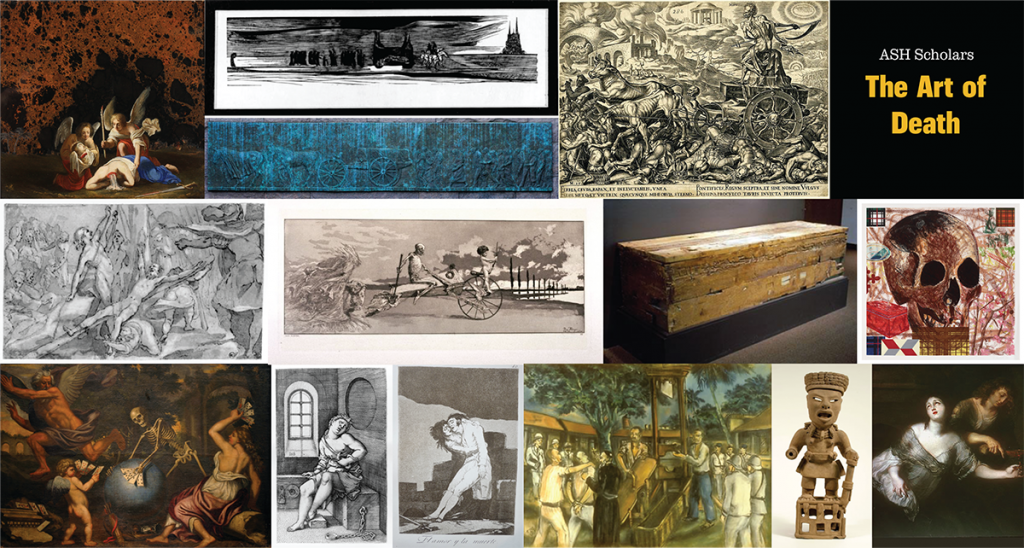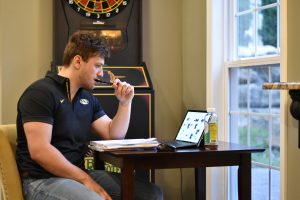Published on Oct. 7, 2020

“The Art of Death” exhibit at the MU Museum Art & Archeology runs through Oct. 18, 2020, and represents a research project in which students explore viewers’ reactions to death imagery in the arts.
I first heard about the Arts, Social Sciences and Humanities (ASH) program the summer before my freshman year during a tour of the MU Honors College. At that point, I saw research as daunting — a process that I didn’t, and maybe couldn’t, understand. I applied for the ASH “Art of Death” research team rather late in the process, feeling as if I didn’t stand a chance. To my surprise, within two weeks I was a verified member.
In my first meeting with the 15-person group (four faculty members and 11 students), I was the only freshman. I was practically shaking with nerves. As we went around and began talking about the heavy topics of death and dying, which we would soon begin researching, my mood surprisingly lightened as we all shared our experiences. Personally, I’ve found that accepting death is difficult, and the concept is a tough one to grapple with. In confronting that intellectual fear, I took solace in learning more about how we react to death as a concept. So, I joined the team that would dedicate itself to the psychological component of the study.

Jarrod Russo, a senior biology major from St. Louis, participated in the ASH Scholars Program through the Office of Undergraduate Research and the Honors College.
Now, as a senior biology major, I look back with appreciation at the excellent students across a variety of majors that I’ve met through the ASH research program. The beauty of ASH is that it takes various disciplines and merges them into one project. For the “Art of Death,” we looked at how digital storytelling, psychology and art history could intertwine into one project. Although it wasn’t always easy to meld these fields, it allowed us to reach beyond any one frame or subject matter and synergize to create some really interesting outcomes.
The digital storytelling team created and mapped out their own concept of death — and the moments just after death — by employing a virtual reality headset. The art history team curated a beautiful display that depicts death across hundreds of years. The psychology team then created surveys which measured how the paintings and VR rendering reminded subjects of death and the effects these conceptions can have on the psyche, such as death anxiety, death-thought awareness and religious connection. Intertwining these fields gave us a sense of creative accomplishment that is uncommon to a lot of research projects. It’s also what makes the ASH program so special.
When I look back at the three years of research I did through ASH “Art of Death,” I feel lucky. I got to meet some seriously interesting and impressive professors and students alike. Along with the connections, I got the experience of gathering, interpreting and learning how an academic poster should be made and presented in a professional setting. The ASH program was a great experience for me all around, and I am more than happy I was a part of it.